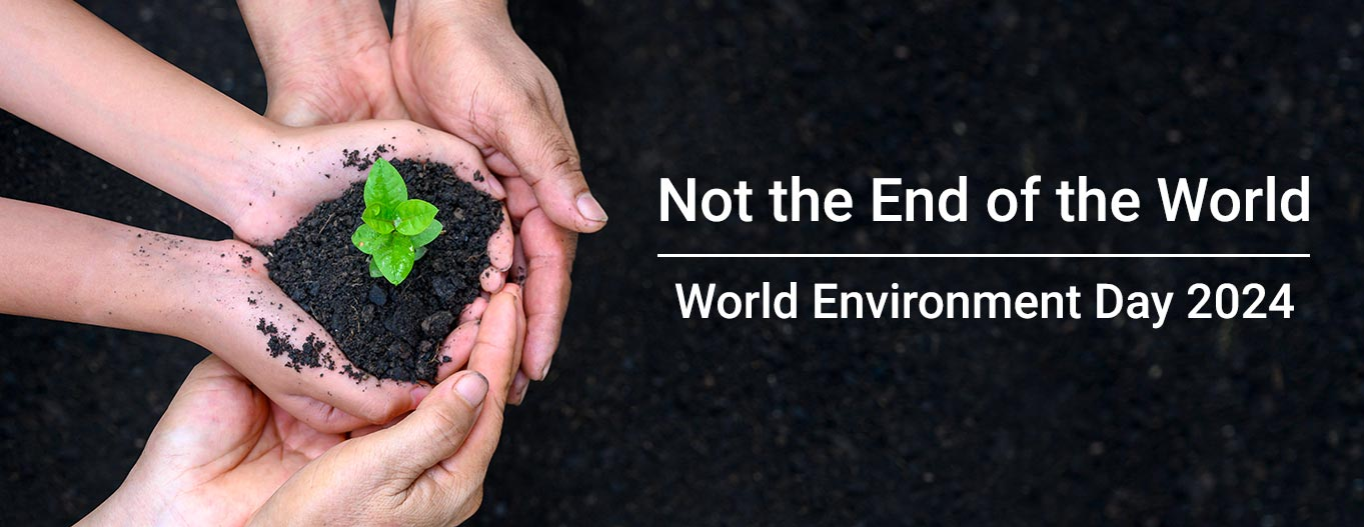
This article is a part of the essay series: Not the End of the World: World Environment Day 2024
Land is an important natural resource as it provides livelihood, food, water, and other ecosystem services. Yet, land degradation and desertification are amongst the world’s most pressing environmental problems. It is estimated that 40 percent of Earth’s total land area has already been degraded. Through 2015-2019, over 100 million hectares (mha) of land was degraded every year impacting global food and water security. Combatting desertification and restoring degraded land by 2030 is a key target of SDG 15, and it is high time to step up our efforts on this front.
This piece looks into India’s experience with desertification and land degradation and how it is deploying emerging technology solutions to combat these processes.
India’s experience with desertification and land degradation
In 2015, India joined the voluntary Bonn Challenge and pledged to restore 13 mha of degraded land by 2020, and an additional 8 mha by 2030. In 2019, the pledge was further increased to restoration of 26 mha of degraded and deforested land by 2030. Of this, India has already restored 9.8 mha from 2011-17.
The Government of India has introduced various schemes and programmes to combat desertification, including through afforestation. These include Green India Mission, Nagar Van Yojana, afforestation under the Compensatory Afforestation Fund Management and Planning Authority, and land restoration work under the Mahatma Gandhi National Rural Employment Guarantee Scheme. India has also introduced the updated National Action Plan to combat desertification and land degradation through forestry interventions. However, with about 32 percent of its land under degradation and 25 percent land undergoing desertification, India is still facing a massive challenge.
The Government of India has introduced various schemes and programmes to combat desertification, including through afforestation.
The Desertification and Land Degradation Atlas of India 2021 notes that during 2018-19, around 29.77 percent of the Total Geographic Area (TGA) of India was undergoing land degradation and desertification. This is a significant increase from the time periods 2011-13 and 2003-05 where 29.32 percent and 28.76 percent of TGA were undergoing land degradation. There has been an increase in land degradation and desertification from 96.2 mha in 2011-13 to 97.85 mha, an increase of 1.18 mha. Figure 1 demonstrates this rise of land degradation in India.
Figure 1: Desertification / Land Degradation Status of India

Source: Desertification and Land Degradation Atlas of India 2021
Employing emerging technologies
The use of emerging technology solutions can be an important tool in our arsenal to combat desertification and restoring land degradation. From using efficient agri-tech practices that reduce harm to the soil, to the use of Earth Observation (EO) and other data to monitor and control desertification, from the use of drones to check illegal mining and supporting afforestation through seed bombing to monitoring soil health, emerging technology solutions have the potential to support our battle against desertification and land degradation. Following are some of the emerging tech solutions already being deployed in different parts of India.
-
Use of Earth Observation and other data
Monitoring desertification and land degradation is the first step to combating these processes. An accurate depiction of the state of desertification allows for agile, efficient and evidence-based decision-making for adopting appropriate mitigation measures. The use of EO and data collected from drones allows for a more accurate representation of the status quo and allows for continuous evaluation of different parameters that impact the degradation process.
Monitoring desertification and land degradation is the first step to combating these processes. An accurate depiction of the state of desertification allows for agile, efficient and evidence-based decision-making for adopting appropriate mitigation measures.
India has recognized the importance of data obtained from earth observation satellites and geospatial technology and has utilised the same for prioritising and monitoring areas, and carrying out desertification vulnerability and risk assessment. The Desertification and Land Degradation Atlas of India 2021 uses EO data to assess and analyse the changes in desertification and land degradation status.
To improve the monitoring, drones can be used to collect more detailed super high-resolution aerial images, LiDAR, and multispectral data at lower costs and faster turn-around time. Drones can also be used for accurate field mapping and measuring the health of the soil. This would facilitate better progress measurement and allow for more dynamic policymaking.
-
High precision agri-tech
Unsustainable agriculture practices are key drivers of land degradation as such practices can endanger soil and degrade soil quality. To counter the negative impact of such agricultural practices, agri-tech solutions can be adopted to optimize resource usage while preserving the environment. Such solutions can include the use of high-technology GPS equipment to control machinery movements, the use of AI to optimise water, and the use of sensor-based systems to improve irrigation.
-
Using drones for afforestation
Aerial seeding or seed-bombing, i.e., the use of drones, planes or helicopters to scatter organic seed balls, is an effective and quick way for afforestation. This process is well suited to inaccessible areas where plantation by traditional methods on a large scale is difficult.
Over the years, several Indian states have undertaken projects for seed-bombing to support their afforestation efforts. The Andhra Pradesh government launched an aerial seeding programme with the assistance of Indian Navy helicopters in 2015. Subsequently, in 2016, Karnataka launched a tree-planting drive in the Western Ghats using drones. Several other seed-bombing initiatives have been implemented across the country, including in the Aravalli, Uttarakhand, and Rajasthan.
-
Controlling illegal mining
Illegal mining can have severe environmental impact causing deforestation, pollution, land degradation and desertification. For instance, illegal mining of sandstone and marble in the Aravalli has caused rampant soil erosion and converted it into a rocky wasteland. To control illegal mining, now drones have been deployed to scan the area and check stone mining. In addition, CCTV cameras have been installed in sensitive areas.
Illegal mining can have severe environmental impact causing deforestation, pollution, land degradation and desertification.
Way forward
With only six years to 2030, it is high time that we accelerate our progress towards combatting desertification and restoring land degradation. India’s effort to achieve its national commitments under the Bonn Challenge through various schemes and policies is commendable, however, there is an increase in desertification and land degradation in the country. Even though India is already implementing many technology solutions to counter these processes, it is important to amplify the use of such technologies.
Basu Chandola is an Associate Fellow at the Observer Research Foundation.
The views expressed above belong to the author(s). ORF research and analyses now available on Telegram! Click here to access our curated content — blogs, longforms and interviews.




 PREV
PREV



